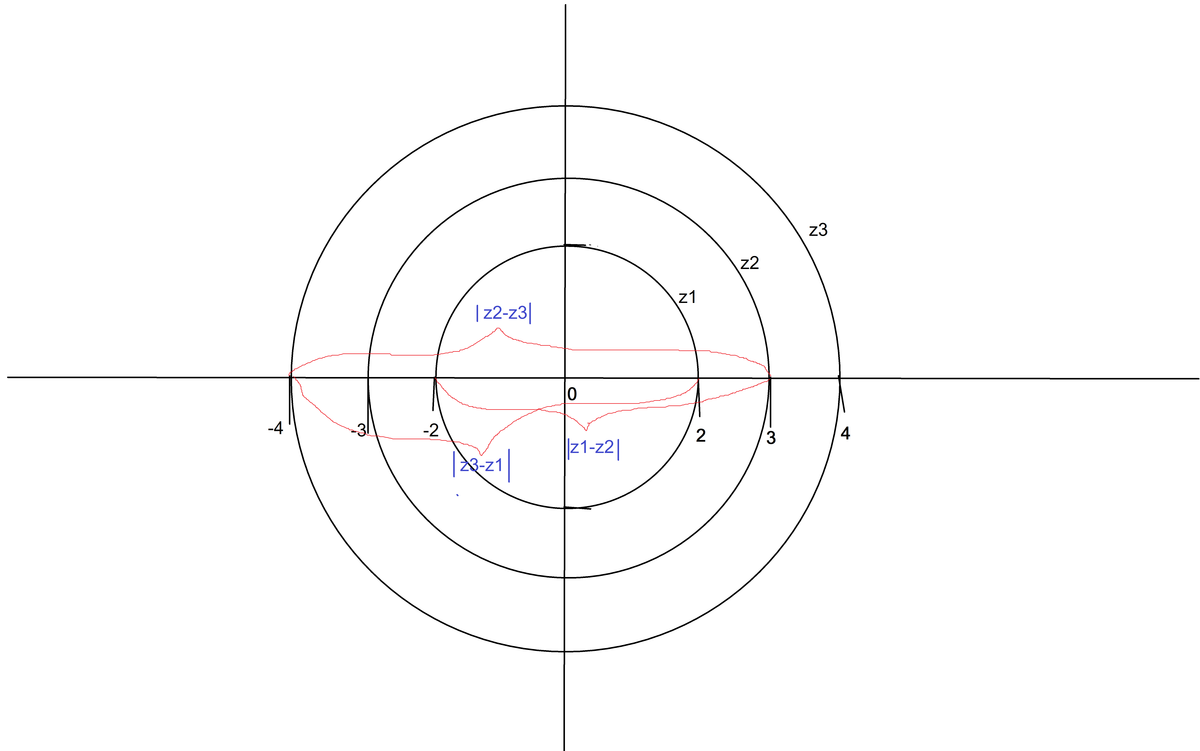
Calvin Edit: Discussion about mistakes made in a problem should occur on the solution discussion, so that others who work on the problem can also learn from it. I have locked this discussion.
In Parth Lohomi's question
It is given ∣z1∣=2,∣z2∣=3and∣z3∣=4 and we have to find the maximum value of ∣z1−z2∣2+∣z2−z3∣2+∣z3−z1∣2.
here is how I did the problem,
We know that ∣z1∣=2 represent a circle with center (0,0) and radius=2. Similarly ∣z2∣=3 and ∣z3∣=4 represent circles with radius 3 and 4 respectively and centers (0,0)
Now drawing these circles on complex plane we get maximum values of,
∣z1−z2∣=5⟹∣z1−z2∣2=25
∣z2−z3∣=7⟹∣z2−z3∣2=49
∣z3−z1∣=6⟹∣z3−z1∣2=36
Therefore ∣z1−z2∣2+∣z2−z3∣2+∣z3−z1∣2=25+49+36=110
But this answer is shown wrong......So what has I done wrong in solving this?Please help.
#Algebra
#ComplexNumbers

Easy Math Editor
This discussion board is a place to discuss our Daily Challenges and the math and science related to those challenges. Explanations are more than just a solution — they should explain the steps and thinking strategies that you used to obtain the solution. Comments should further the discussion of math and science.
When posting on Brilliant:
*italics*or_italics_**bold**or__bold__paragraph 1
paragraph 2
[example link](https://brilliant.org)> This is a quote# I indented these lines # 4 spaces, and now they show # up as a code block. print "hello world"\(...\)or\[...\]to ensure proper formatting.2 \times 32^{34}a_{i-1}\frac{2}{3}\sqrt{2}\sum_{i=1}^3\sin \theta\boxed{123}Comments
In future, if you spot any errors with a problem, you can “report” it by selecting "report problem" in the “dot dot dot” menu in the lower right corner. You will get a more timely response that way.

This also allows those who have made a similar error to learn from your experience.
Ok, Thanks sir
@Calvin Lin , @Parth Lohomi @Swananda Punde , , @Deepanshu Gupta, @Ronak Agarwal Could you help please...
Anandhu Raj , it is true that these are the maximum values of the expressions ∣z1−z2∣…, but these are not simultaneously satisfied for any triplet. To make my point clearer and simple to understand consider any point z1 and find the corresponding z2 so that ∣z1−z2∣ is 5. Similarly, find a z3 for the previously found z2 so that ∣z2−z3∣=7. Now you have all the three points z1, z2 and z3. Is ∣z1−z3∣=6 ?
Oh! got it ..Thanks! So is there any geometrical approach for this question?
@Unnikuttan Cheranalloor The equation (x−3)9+(x−32)9+(x−33)9+..........+(x−39)9=0 has
(a) all the roots real.
(b)1 real and 8 imaginary roots.
(c)real roots namely x=3,32,33.....39
(d)5 real and 4 imaginary roots.
How to do?